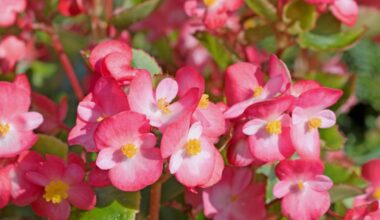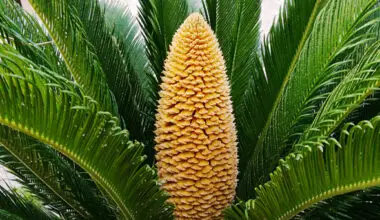The poinsettia adorns the flower stalls of florists during the festive season, earning it the sweet nickname of Christmas Star. What we covet so much about this euphorbia is not its flowers, but its bracts, which are adorned with beautiful colors for the holidays! The poinsettia is the must-have Christmas plant in the United States, Mexico and Europe.
The poinsettia appreciates a temperature between 59°F and 68°F, good humidity (this is the essential difficulty of its cultivation) and lots of light. You can take it out between May and September in full sunshine. Bring fertilizer to the plant during the summer months. A not too heated veranda will be ideal.
Contents
Planting the poinsettia
The cultivation of the poinsettia starts as early as September for a flowering at the end of the year.
Indoors
- Place your plant in good soil.
- The quality of the soil will improve the quality of the flowering.
- It is recommended to place clay balls at the bottom of the pot to facilitate drainage and prevent the roots from swimming in water.
- This is not necessary if you have just bought your poinsettia and the pot has a hole in the bottom.
Outdoors
- The poinsettia remains a tropical plant that will only grow in particular climatic conditions where heat and humidity are mixed.
- However, it can still be cultivated in the Mediterranean region, which is well sheltered.
Pruning the poinsettia
- After flowering, bend the stems about 2 to 4 inches from the base. Folding down is the same as cutting all the stems that make up the plant.
- You will thus stimulate new shoots and a new bloom the following year.
- But to find out what to do with your poinsettia after it has bloomed, read the section below.
Poinsettia Repotting and Drainage
Once your poinsettia has been pruned, repot it in a slightly larger pot with good potting soil for houseplants. Be sure to place clay balls at the bottom of the pot to ensure good root drainage. Even though it needs water, too much may discolour its leaves.
Take your poinsettia outdoors
From June to September, place your poinsettia outside in the sun if possible. This will allow it to develop its beautiful green foliage. Make the transition to full sunshine by placing the poinsettia in mid-shade. Make sure outdoor temperatures are above 59°F day and night.
It is by no means mandatory to take it outside. However, if it stays indoors, place it in a bright room near a window, never exposed to direct sunlight.
Resume watering at normal frequency (water as soon as the soil is dry).
5 tips to make a poinsettia bloom again
1- A fresh and bright room
If your poinsettia has been outdoors for the summer, bring it in before the temperatures get too cold for it (no temperatures below 59°F). Place your poinsettia in a bright but cool room between 59 and 64°F. Remove faded or damaged leaves.
2- Water at room temperature
As with the flowering poinsettia, watering takes place as soon as the soil is dry on the surface, with water at room temperature. Never wet its leaves, water by foot.
3- Maintain a humid environment
Your poinsettia always needs a moist atmosphere. Spray its leaves or place a saucer with clay beads and a water base under the pot (see article on caring for the poinsettia in bloom).
4- Simulate short days to provoke the flowering of the poinsettia.
Poinsettias naturally need less daylight than night to bloom again. Like chrysanthemums or other plants, it is indeed a short day and a long night that will induce flowering: about 14 hours without light. It is on this condition that its bracts will be colored again and that it will bloom again.
If it is difficult for you to leave it in an unoccupied but luminous room, artificially recreate this duration without light. Place your poinsettia “in the closet” and only leave it exposed to natural light for the remaining period of time (e.g. from 8 a.m. to 6 p.m.).
Alternatively, use a large cardboard box or paper bag to cover it when you need to light up between 6pm and 8am.
5- Persevere
It will take about 8 weeks after the flowers begin to form before the poinsettia starts to turn colour. Stop covering it as soon as the colouring of the bracts is well established.
Poinsettia Diseases and Problems
Yellow leaves of the poinsettia
If the leaves turn yellow and fade, it is because the air is too dry.
The ideal is then to put your plant on a bed of gravel, pebbles or clay balls constantly wet.
Leaves whiten or discolor
This is usually due to excess water or insufficient drainage.
It is important to water only when the soil is dry.
Summary
The Poinsettia or Christmas star is a euphorbia that appears on the shelves of garden centers during the holiday season. It owes its name as a Christmas star to the colorful red, cream or pink bracts that surround the flowers.
Poinsettias are often sold in peat, which does not provide the plant with any nutrients and dries out very quickly. It is therefore preferable to transplant it from the first year in real soil.









